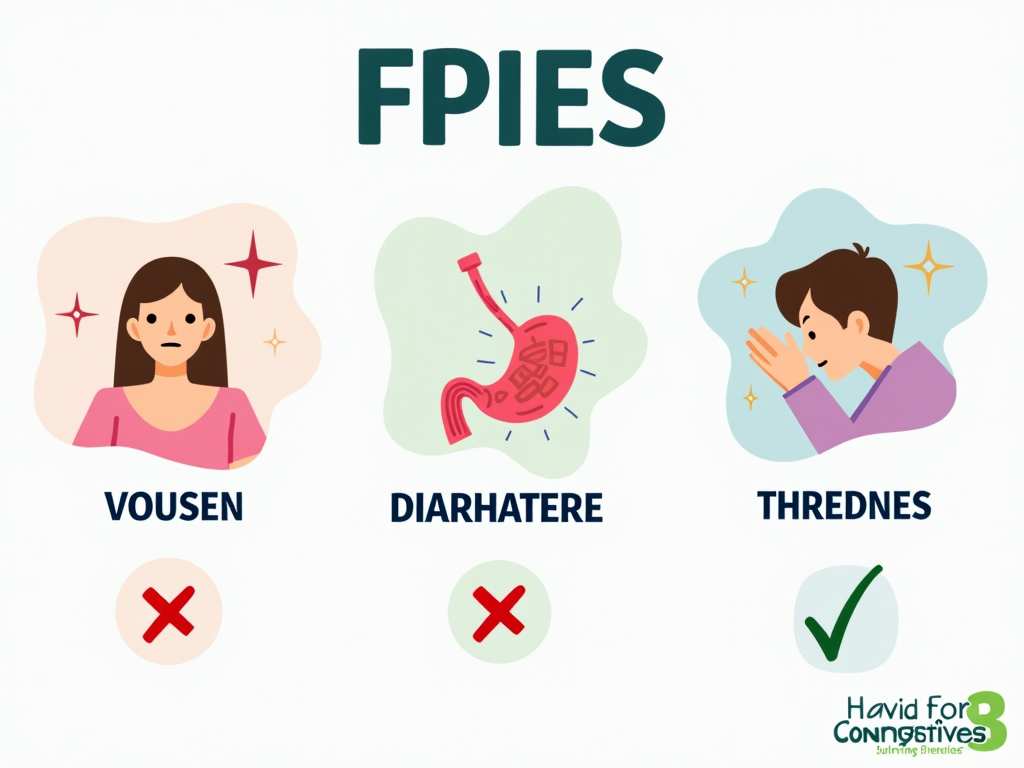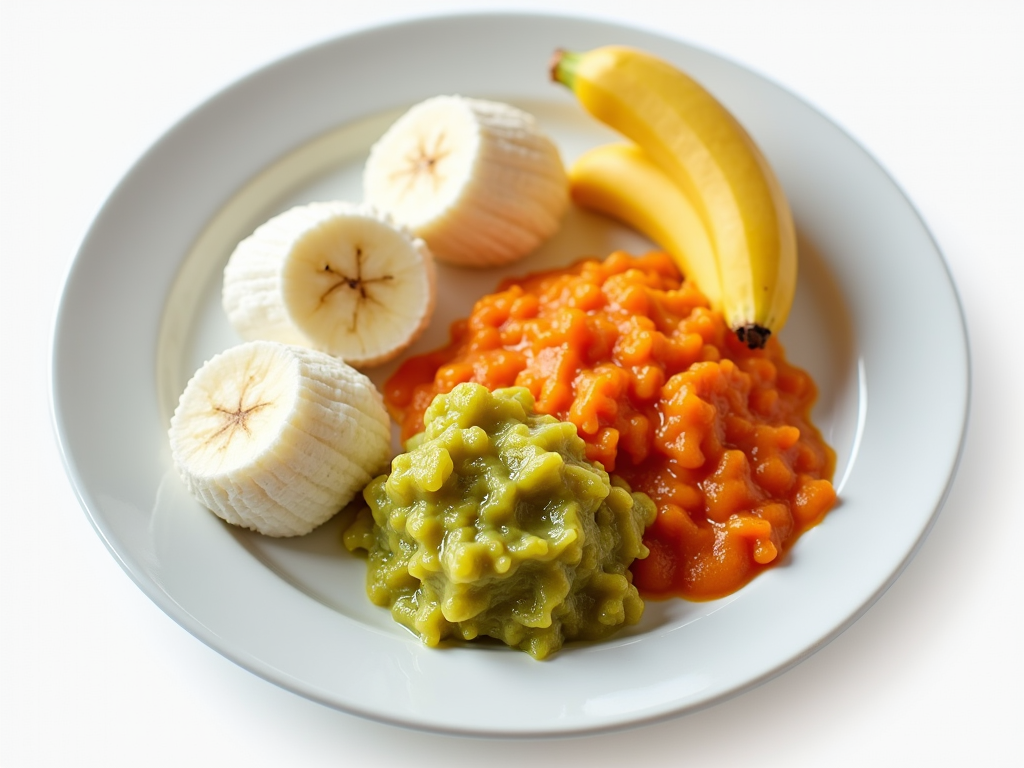Overview
Food Protein-Induced Enterocolitis Syndrome (FPIES) is a food allergy that affects infants and young children. It triggers delayed gastrointestinal symptoms like vomiting and diarrhea after eating certain foods. This guide helps parents navigate FPIES with confidence.
What is FPIES?
FPIES is a unique food allergy that doesn’t cause typical reactions like hives or swelling. Instead, it impacts the stomach and intestines, leading to symptoms such as:
- Repeated vomiting
- Diarrhea
- Tiredness or weakness
- Pale skin
These signs often show up 2-6 hours after eating a trigger food. Common culprits include milk, soy, rice, and oats, though any food protein might cause a reaction. Doctors diagnose FPIES based on a child’s history and symptoms, not standard allergy tests.

Why FPIES Stands Out
Unlike most food allergies, FPIES doesn’t involve immediate immune responses. Other allergies trigger fast reactions like breathing trouble, but FPIES causes delayed gut issues. This delay makes it tricky to spot at first. Parents often notice patterns only after several episodes.
Spotting Acute FPIES Reactions
Acute FPIES can feel scary. Look for these signs after your child eats:
- Vomiting that starts 1-4 hours later and keeps going
- Pale or bluish skin
- Feeling very sleepy or limp
- Diarrhea hours later
Severe cases might lead to low blood pressure, so quick medical help is key. Keep a list of these symptoms handy to act fast.

How to Manage FPIES
Managing FPIES means avoiding trigger foods and staying prepared. Try these steps:
- Team Up with a Doctor: Find an allergy or gut specialist to guide you.
- Track Everything: Write down what your child eats and any reactions.
- Test Foods Carefully: Add new foods one by one, watching for days.
- Plan for Emergencies: Know when to call a doctor or head to the ER.
- Teach Others: Make sure babysitters or family know the drill.
A Mom’s Story
“My daughter’s FPIES hit us hard. Rice, of all things, sent her to the hospital twice before we figured it out. I was terrified of feeding her anything new. But with help from our doctor and some safe recipes, we’ve found a rhythm. She’s growing strong now.” - Emily, parent

Cooking for Kids with FPIES: Easy and Safe Recipes
Feeding a child with FPIES takes creativity. These FPIES-friendly recipes for children are simple, safe, and packed with good stuff. Always double-check with your doctor first.
Banana and Coconut Blend
- Ingredients: 1 banana, 1/4 cup coconut milk
- Steps: Mash the banana, mix in coconut milk, and serve fresh.
- Why It Works: Bananas are gentle on the gut, and coconut milk skips dairy triggers.
Veggie Rice-Free Mash
- Ingredients: 1 sweet potato, 1 carrot, 1 tsp olive oil
- Steps: Steam the veggies until soft, blend with oil, and serve warm.
- Why It Works: Sweet potatoes and carrots are low-risk and full of vitamins.

Apple and Squash Puree
- Ingredients: 1 apple, 1/2 cup butternut squash
- Steps: Peel and chop both, steam until tender, then blend smooth.
- Why It Works: Apples and squash are safe bets for most FPIES kids and taste great together.
Healthy Living with Food Allergies
FPIES doesn’t have to hold your child back. Here’s how to keep life healthy and fun:
- Stick to Basics: Use fresh, whole foods your child tolerates.
- Check Labels: Watch out for hidden triggers in packaged stuff.
- Get Them Involved: Teach older kids about their allergy simply.
- Stay Upbeat: Focus on what they can enjoy, not just what’s off-limits.

Wrapping Up
FPIES can feel overwhelming, but you’ve got this. Learn the signs, skip the trigger foods, and whip up safe meals. Your child can still grow up healthy and happy. Many kids outgrow FPIES, so there’s light ahead. Keep going—you’re doing great!
Discuss Here